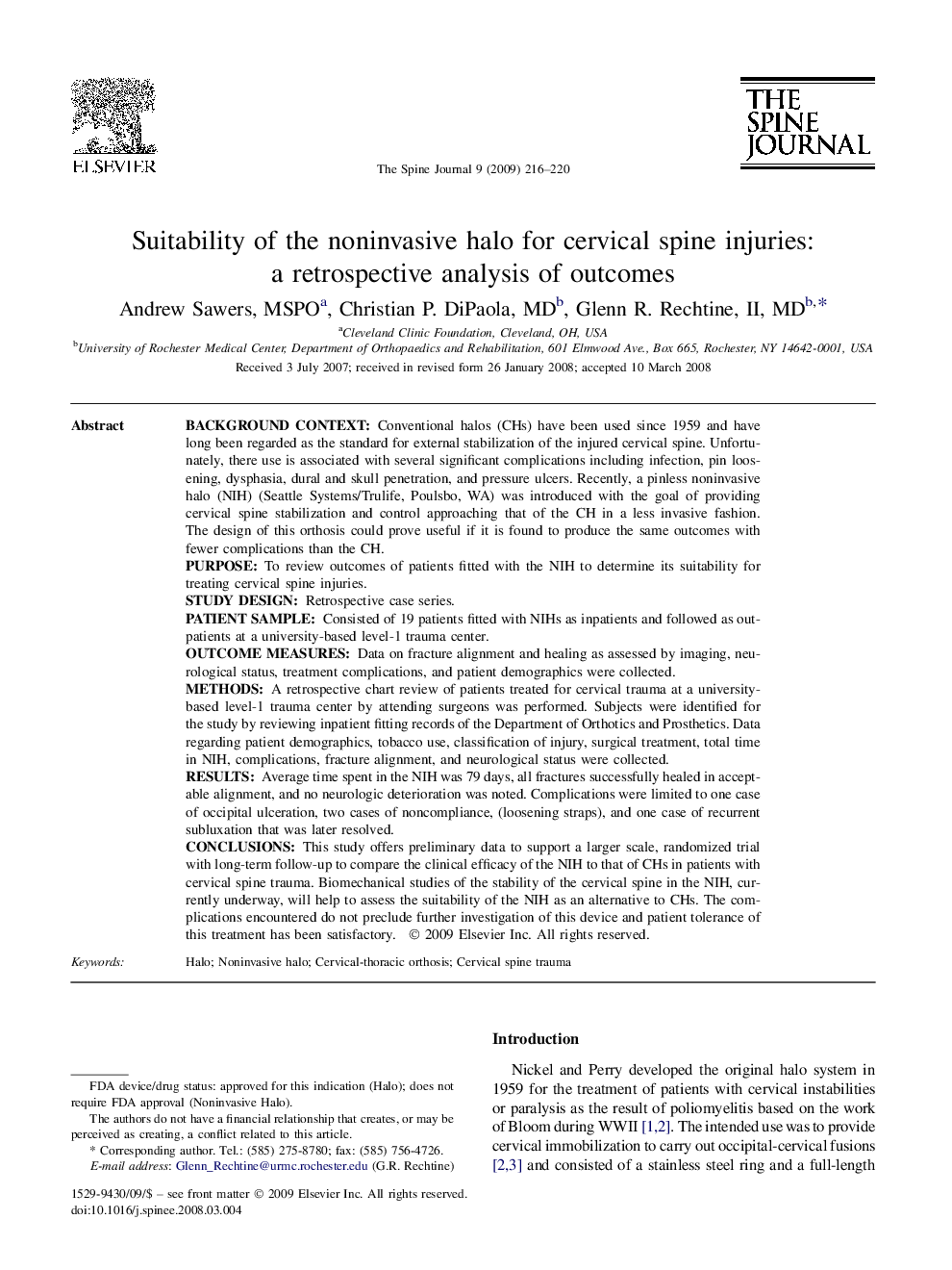| کد مقاله | کد نشریه | سال انتشار | مقاله انگلیسی | نسخه تمام متن |
|---|---|---|---|---|
| 4099678 | 1268650 | 2009 | 5 صفحه PDF | دانلود رایگان |

Background contextConventional halos (CHs) have been used since 1959 and have long been regarded as the standard for external stabilization of the injured cervical spine. Unfortunately, there use is associated with several significant complications including infection, pin loosening, dysphasia, dural and skull penetration, and pressure ulcers. Recently, a pinless noninvasive halo (NIH) (Seattle Systems/Trulife, Poulsbo, WA) was introduced with the goal of providing cervical spine stabilization and control approaching that of the CH in a less invasive fashion. The design of this orthosis could prove useful if it is found to produce the same outcomes with fewer complications than the CH.PurposeTo review outcomes of patients fitted with the NIH to determine its suitability for treating cervical spine injuries.Study designRetrospective case series.Patient sampleConsisted of 19 patients fitted with NIHs as inpatients and followed as outpatients at a university-based level-1 trauma center.Outcome measuresData on fracture alignment and healing as assessed by imaging, neurological status, treatment complications, and patient demographics were collected.MethodsA retrospective chart review of patients treated for cervical trauma at a university-based level-1 trauma center by attending surgeons was performed. Subjects were identified for the study by reviewing inpatient fitting records of the Department of Orthotics and Prosthetics. Data regarding patient demographics, tobacco use, classification of injury, surgical treatment, total time in NIH, complications, fracture alignment, and neurological status were collected.ResultsAverage time spent in the NIH was 79 days, all fractures successfully healed in acceptable alignment, and no neurologic deterioration was noted. Complications were limited to one case of occipital ulceration, two cases of noncompliance, (loosening straps), and one case of recurrent subluxation that was later resolved.ConclusionsThis study offers preliminary data to support a larger scale, randomized trial with long-term follow-up to compare the clinical efficacy of the NIH to that of CHs in patients with cervical spine trauma. Biomechanical studies of the stability of the cervical spine in the NIH, currently underway, will help to assess the suitability of the NIH as an alternative to CHs. The complications encountered do not preclude further investigation of this device and patient tolerance of this treatment has been satisfactory.
Journal: The Spine Journal - Volume 9, Issue 3, March 2009, Pages 216–220